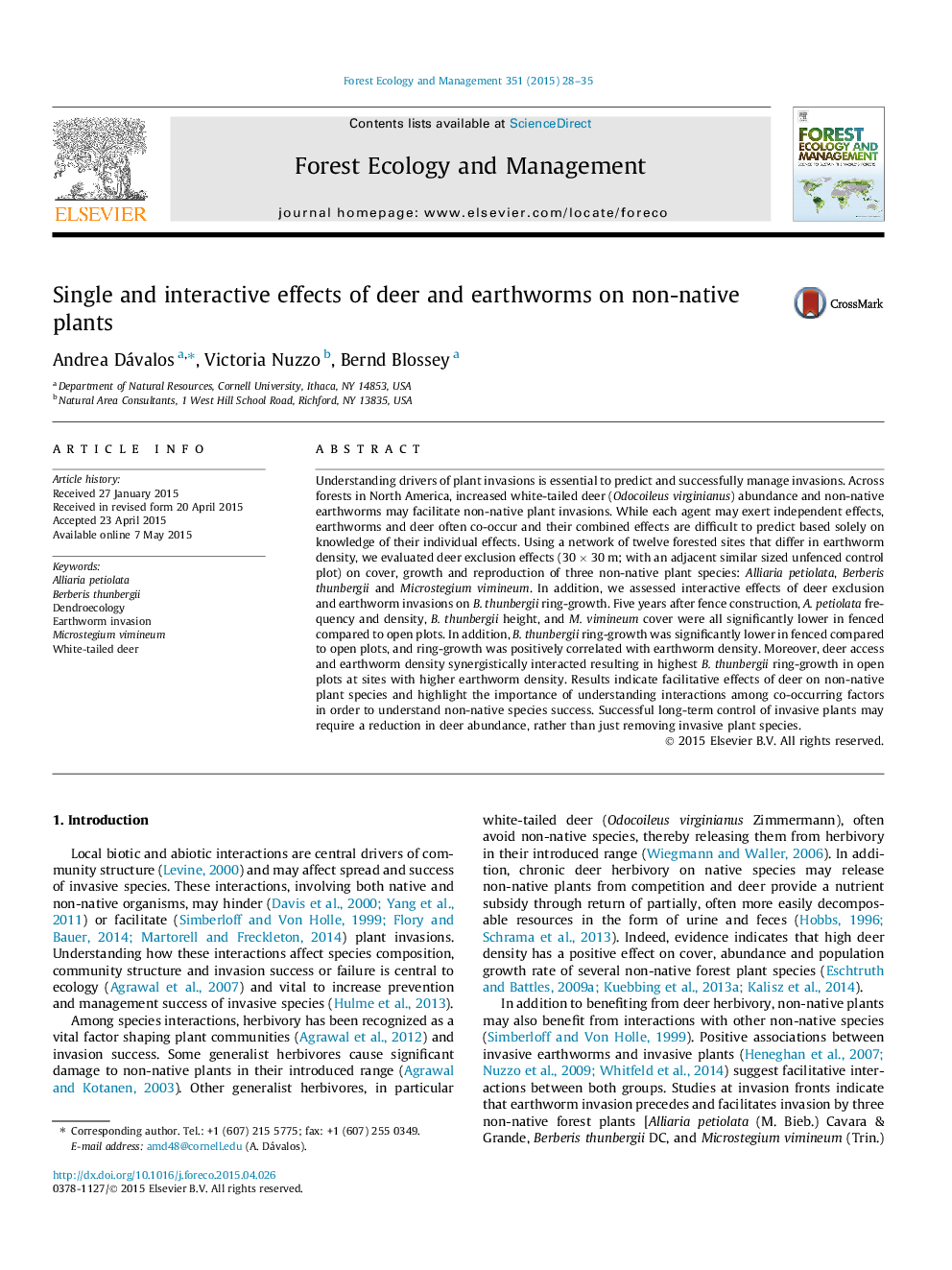| Article ID | Journal | Published Year | Pages | File Type |
|---|---|---|---|---|
| 86124 | Forest Ecology and Management | 2015 | 8 Pages |
•Deer exclusion through fencing decreased performance of three non-native plant species.•Deer and earthworms synergistically interact to favor Berberis thunbergii ring-growth.•Deer are major drivers in our system, facilitating earthworm and non-native plant populations.•Reducing deer density is necessary to decrease non-native plants and protect native species.
Understanding drivers of plant invasions is essential to predict and successfully manage invasions. Across forests in North America, increased white-tailed deer (Odocoileus virginianus) abundance and non-native earthworms may facilitate non-native plant invasions. While each agent may exert independent effects, earthworms and deer often co-occur and their combined effects are difficult to predict based solely on knowledge of their individual effects. Using a network of twelve forested sites that differ in earthworm density, we evaluated deer exclusion effects (30 × 30 m; with an adjacent similar sized unfenced control plot) on cover, growth and reproduction of three non-native plant species: Alliaria petiolata, Berberis thunbergii and Microstegium vimineum. In addition, we assessed interactive effects of deer exclusion and earthworm invasions on B. thunbergii ring-growth. Five years after fence construction, A. petiolata frequency and density, B. thunbergii height, and M. vimineum cover were all significantly lower in fenced compared to open plots. In addition, B. thunbergii ring-growth was significantly lower in fenced compared to open plots, and ring-growth was positively correlated with earthworm density. Moreover, deer access and earthworm density synergistically interacted resulting in highest B. thunbergii ring-growth in open plots at sites with higher earthworm density. Results indicate facilitative effects of deer on non-native plant species and highlight the importance of understanding interactions among co-occurring factors in order to understand non-native species success. Successful long-term control of invasive plants may require a reduction in deer abundance, rather than just removing invasive plant species.
Graphical abstractFigure optionsDownload full-size imageDownload as PowerPoint slide
